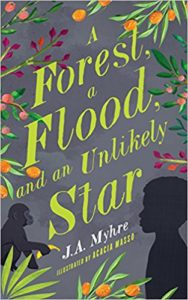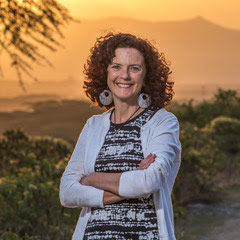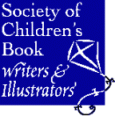
I love reading middle grade fiction and jumped at the chance to review a new release that promised to transport me to the heart of Africa. The title of J.A. Myhre’s book, A Forest, a Flood, and an Unlikely Star, intrigued me, and I learned it’s the third book in the author’s Rwendigo Tales series. Since I missed reading the first two books, I wondered if I’d be able to catch up, but fortunately the setting in fictional Rwendigo is what unifies the series, since each book features a different protagonist.
As a long-time medical missionary to Africa, Myhre is in a unique position to offer readers an in-depth view of life on the front lines of the fight against poverty and disease. In her blog, Paradox Uganda, readers can view her stunning wildlife photography and learn more about her medical mission work with Serge. I found it helpful knowing a bit about the author’s background as I read her book, as several scenes take place in and around a healthcare clinic. I could easily sense her passion to raise awareness of issues affecting inhabitants of the continent.
In the introductory note, Myhre shares that the books were originally written as Christmas gifts to her own children. I would put the appropriate reading age range as 9 and up, since the story contains a violent scene that might be too scary for younger children. But the book is fascinating for all ages, especially teens and adult readers interested in travel and volunteering. The beautiful pen-and-ink drawings by illustrator Acacia Masso also bring the story to life.
The main character, 13-year-old Kusiima (which means “thankul” in the Luwendigo dialect), lives with his grandmother and toddler sister, Ngonzi (meaning “love”). Although he longs to go to school, Kusiima must work selling charcoal to help earn a meager living, especially since his sister has a debilitating illness. During his long workday, he stations himself near a school window, so he can hear the teacher and grasp at small scraps of knowledge. He enjoys listening to his grandmother, Mamba, tell stories of his childhood, and we learn that his mother, Rose, died a year ago and his father has abandoned him. Like a Horatio Alger tale, we root for Kusiima to make wise choices and rise above his circumstances.
One day, he is invited to join an older group of men going into the forest to obtain charcoal, and from here his adventure begins. Kusiima learns the group is stealing resources from national parkland, and we sense his fear and horror as one seedy character pulls out a gun to shoot an endangered species of gorilla. Kusiima escapes into the forest and later rescues a baby gorilla that he is able to take to a park ranger. The plot thickens as the poachers are bent on revenge.
At this point, I couldn’t put the book down. Both Kusiima and the park ranger’s lives are in danger. Meanwhile, his sister has weakened from malnutrition and a mysterious disease, and he must convince his grandmother to take her to the local healthcare clinic. But that is hard to do since his grandmother doesn’t believe in modern medicine:
She had grown up in an era when sickness was either cured by ritual and magic, or ended in death. He knew she suspected that evil forces were at work in his sister’s condition, and she would have sought mediation with these disturbing spirits if the fee were not so prohibitive.
Yet at last, his grandmother agrees the clinic may be their only hope. She has seen more death and sorrow than a person should be able to bear in one lifetime, losing three of her own sons as infants. At the clinic, Kusiima meets a local doctor who helps make the discovery that Kusiima’s family goats may offer a resource for healing his sister. As he spends time with the doctor, some mysteries from Kusiima’s past come to the surface. Why are there books in the doctor’s house with Kusiima’s name written in them? Does the doctor know his cruel, absentee father?
Despite being surrounded by darkness, the book offers hope through Kusiima’s growing faith in God. Readers will enjoy the magical realism of a mysterious donkey, Nsoli, which means “Star.” The donkey has an uncanny sense of always showing up in the right place at the right time, rescuing Kusiima.
When a flood comes to his town, Kusiima must make a choice that will change his life forever. Readers won’t be able to stop turning the pages to find out what Kusiima decides to do. Along the way, the author’s vivid writing makes us feel as if we’re right in the thick of his circumstances.
One of my favorite descriptive scenes comes from park ranger Luci’s point of view, as she observes a troupe of silverback gorillas in the forest:
Today was just a glimpse of her future as a park ranger, but she wanted to remember it forever. The hum of flies, the slant of the sun’s rays, the pungent smell of the gorillas as they burped, their slapping sound as they walked, the rustle of leaves, a rising cloud of tiny bright yellow butterflies. This glory of Rwendigo was what her work was all about — preserving this beauty, sharing its wonders.
As I read this exciting tale, I couldn’t help but hear the author’s own story woven through each chapter. The medical missionary in Africa, writing a Christmas gift for her children. It’s hard to say which story I liked more, especially after seeing the author’s blog depicting her real-life mission work. I learned so much about the problems of healthcare in these poor regions of Africa, as well as environmental and wildlife crises stemming from corruption and poverty.
The author shares her positive spirit in the introduction: “It is my hope that you will connect with these characters in a way that respects their resilience, and you will let this story inform your own story as you make your way into this world of adventures armed with a readiness to forgive and an expectation of wonder.”
With many schools today pushing to incorporate more multicultural literature into the curriculum, I think the Rwendigo Tales offer a firsthand glimpse into African culture and language. Throughout the book, the author describes food, customs, and healthcare terms in both the Luwendigo dialect and Swahili. The back of the book contains a glossary, which is helpful to use while reading. For example, I learned that AIDS is referred to as “slim disease” since infected people lose so much weight.
Young readers can also learn about the African educational system, which differs greatly from the U.S. In this region, students take the PLE at the end of seven years of schooling, which stands for Primary Leaving Exam. While most American students simply go to the school closest to home, results from the PLE determine where students in Africa will be placed in secondary school, or whether they will even be able to continue in school. From Kusiima’s point of view, we learn that school is a privilege denied to children in poverty, who must work from young ages to help put food on the table.
I was also fascinated by all of the descriptions of African food. I can imagine students giving a book report based on the Rwendigo Tales, enlisting them to look up pictures of local dishes, such as posho, described as “corn meal; usually cooked into a thin porridge with boiling water or hot milk and sugar, or steamed into a thick bread-like starch base for a meal.” Readers will also learn that sombe is “a sauce made of chopped cooked cassava leaves, similar to spinach.”
After reading A Forest, a Flood, and an Unlikely Star, I’m eager to continue journeying through Rwendigo in the first two books in the series: A Chameleon, a Boy, and a Quest, and A Bird, a Girl, and a Rescue, all published by New Growth Press. Best of all, the author plans to share a portion of her book royalties to a “fund that enables real children to emerge with resilience from childhoods threatened by poverty, rebel warfare, human trafficking, malnutrition, loss, and fear.”
Teen and adult readers may be curious to learn more about medical mission internships available through the organization, Serge, which the author serves in Africa. From Serge, we learn that a purchase of this book:
…enables orphans to receive an education, babies of HIV-positive mothers to receive food, children who have never held a book to receive a library, and much more. These small acts of justice and mercy have the power to bring hope and enable communities to write new endings to their own stories.
About the Author:

J. A. Myhre serves as a doctor with Serge in East Africa where she has worked for over two decades. She is passionate about health care for the poor, training local doctors and nurses, promoting childhood nutrition and development, and being the hands of Jesus in the hardest places. She is married to her best friend and colleague Scott, and together they have raised four children for whom many of her stories were written as Christmas presents.
I appreciate LitFuse and New Growth Publishers for sending me a complimentary copy. All opinions expressed are mine alone.





